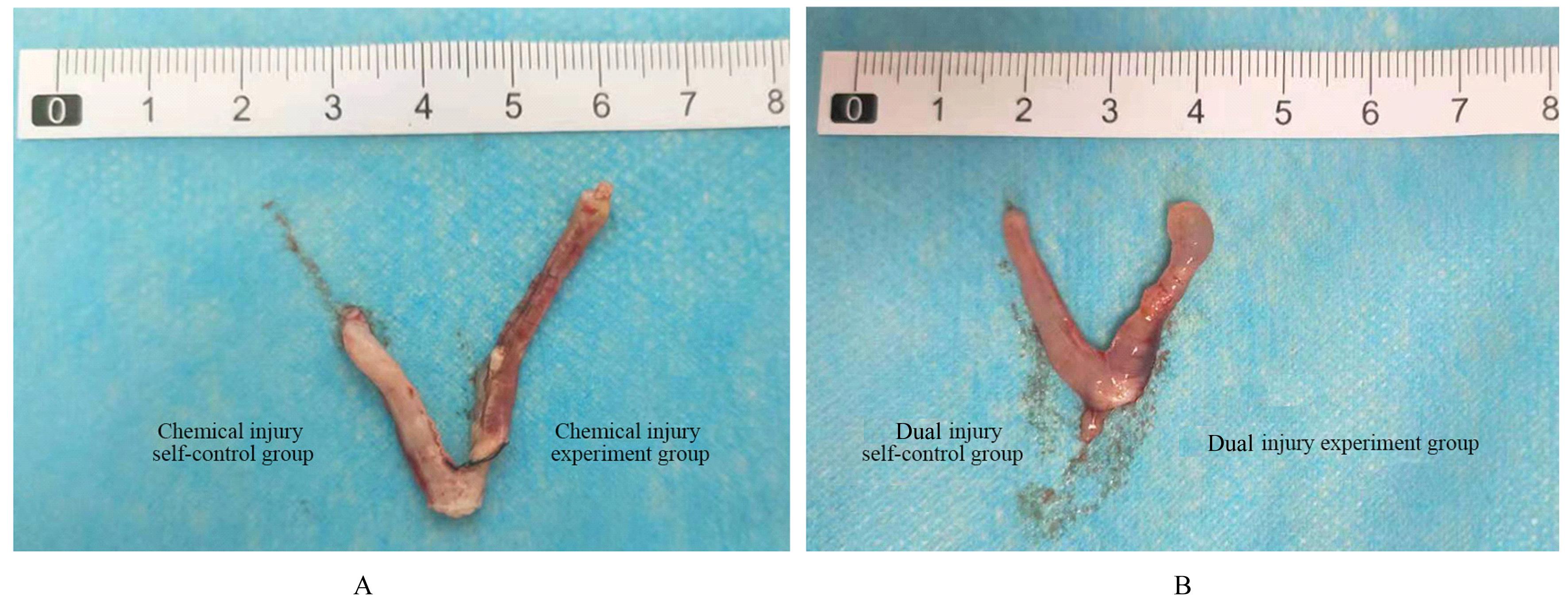| 1 |
DI GUARDO F, PALUMBO M. Asherman syndrome and insufficient endometrial thickness: a hypothesis of integrated approach to restore the endometrium[J]. Med Hypotheses, 2020, 134: 109521.
|
| 2 |
CHENG Y H, TSAI N C, CHEN Y J, et al. Extracorporeal shock wave therapy combined with platelet-rich plasma during preventive and therapeutic stages of intrauterine adhesion in a rat model[J]. Biomedicines, 2022, 10(2): 476.
|
| 3 |
KOU L F, JIANG X, XIAO S Y, et al. Therapeutic options and drug delivery strategies for the prevention of intrauterine adhesions[J]. J Control Release, 2020, 318: 25-37.
|
| 4 |
LEUNG R K K, LIN Y X, LIU Y H. Recent advances in understandings towards pathogenesis and treatment for intrauterine adhesion and disruptive insights from single-cell analysis[J]. Reprod Sci, 2021, 28(7): 1812-1826.
|
| 5 |
GAO Y Y, WU G J, XU Y, et al. Stem cell-based therapy for asherman syndrome: promises and challenges[J].Cell Transplant,2021,30: 9636897211020734.
|
| 6 |
MA J Y, ZHAN H, LI W, et al. Recent trends in therapeutic strategies for repairing endometrial tissue in intrauterine adhesion[J]. Biomater Res,2021,25(1): 40.
|
| 7 |
LV H Y, WU B B, SONG J Y, et al. Hydrogel, a novel therapeutic and delivery strategy, in the treatment of intrauterine adhesions[J]. J Mater Chem B, 2021, 9(33): 6536-6552.
|
| 8 |
KIM S W, KIM Y Y, KIM H, et al. Animal models closer to intrauterine adhesive pathology[J]. Ann Transl Med, 2020, 8(18): 1125.
|
| 9 |
ZHAO Y X, CHEN S R, HUANG Q Y, et al. Repair abilities of mouse autologous adipose-derived stem cells and ShakeGelTM 3D complex local injection with intrauterine adhesion by BMP7-Smad5 signaling pathway activation[J].Stem Cell Res Ther, 2021,12(1): 191.
|
| 10 |
FENG M, HU S X, QIN W B, et al. Bioprinting of a blue light-cross-linked biodegradable hydrogel encapsulating amniotic mesenchymal stem cells for intrauterine adhesion prevention[J]. ACS Omega, 2021, 6(36): 23067-23075.
|
| 11 |
FENG Q, GAO B S, ZHAO X P, et al. Establishment of an animal model of intrauterine adhesions after surgical abortion and curettage in pregnant rats[J]. Ann Transl Med, 2020, 8(4): 56.
|
| 12 |
BAI X C, LIU J, YUAN W X, et al. Therapeutic effect of human amniotic epithelial cells in rat models of intrauterine adhesions[J]. Cell Transplant, 2020, 29: 963689720908495.
|
| 13 |
ZHANG X X, CHEN G P, WANG Y T, et al. Arrowhead composite microneedle patches with anisotropic surface adhesion for preventing intrauterine adhesions[J].Adv Sci (Weinh),2022,9(12): e2104883.
|
| 14 |
XU X, KONG D S, TIAN Y P, et al. Autocross-linked hyaluronic acid gel and adipose-derived mesenchymal stem cell composites for the treatment intrauterine adhesions[J]. Taiwan J Obstet Gynecol, 2021, 60(6): 1031-1037.
|
| 15 |
ZHANG H H, ZHANG Q, ZHANG J, et al. Urinary bladder matrix scaffolds improve endometrial regeneration in a rat model of intrauterine adhesions[J]. Biomater Sci, 2020, 8(3): 988-996.
|
| 16 |
HAN X, MA Y J, LU X, et al. Transplantation of human adipose stem cells using acellular human amniotic membrane improves angiogenesis in injured endometrial tissue in a rat intrauterine adhesion model[J]. Cell Transplant, 2020, 29: 963689720952055.
|
| 17 |
SHAO X W, QIN J L, WAN C D, et al. ADSC exosomes mediate lncRNA-MIAT alleviation of endometrial fibrosis by regulating miR-150-5p[J]. Front Genet, 2021, 12: 679643.
|
| 18 |
YU J, ZHANG W W, HUANG J Y, et al. Management of intrauterine adhesions using human amniotic mesenchymal stromal cells to promote endometrial regeneration and repair through Notch signalling[J]. J Cell Mol Med, 2021, 25(23): 11002-11015.
|
| 19 |
LIN J Y, WANG Z, HUANG J L, et al. Microenvironment-protected exosome-hydrogel for facilitating endometrial regeneration, fertility restoration, and live birth of offspring[J]. Small, 2021, 17(11): e2007235.
|
| 20 |
JIANG X X, LI X M, FEI X W, et al. Endometrial membrane organoids from human embryonic stem cell combined with the 3D Matrigel for endometrium regeneration in asherman syndrome[J]. Bioact Mater, 2021, 6(11): 3935-3946.
|
| 21 |
JI W Q, HOU B, LIN W G, et al. 3D Bioprinting a human iPSC-derived MSC-loaded scaffold for repair of the uterine endometrium[J]. Acta Biomater, 2020, 116: 268-284.
|
| 22 |
YAO Q, ZHENG Y W, LAN Q H, et al. Aloe/poloxamer hydrogel as an injectable β-estradiol delivery scaffold with multi-therapeutic effects to promote endometrial regeneration for intrauterine adhesion treatment[J]. Eur J Pharm Sci, 2020, 148: 105316.
|
| 23 |
SATO M, NAKAMURA S, INADA E, et al. Recent advances in the production of genome-edited rats[J]. Int J Mol Sci, 2022, 23(5): 2548.
|
| 24 |
VEDIAPPAN R S, BENNETT C, BASSIOUNI A, et al. A novel rat model to test intra-abdominal anti-adhesive therapy[J]. Front Surg, 2020, 7: 12.
|
| 25 |
ZHANG S S, XU X X, XIANG W W, et al. Using 17β-estradiol heparin-poloxamer thermosensitive hydrogel to enhance the endometrial regeneration and functional recovery of intrauterine adhesions in a rat model[J]. FASEB J, 2020, 34(1): 446-457.
|
| 26 |
XIN L B, LIN X N, ZHOU F, et al. A scaffold laden with mesenchymal stem cell-derived exosomes for promoting endometrium regeneration and fertility restoration through macrophage immunomodulation[J]. Acta Biomater, 2020, 113: 252-266.
|
| 27 |
NIU H P, MIAO X L, ZHAN X X, et al. Tiaoshen Tongluo attenuates fibrosis by modulating the TGF-β1/smad pathway in endometrial stromal cells and a rat model of intrauterine adhesion[J]. Evid Based Complement Alternat Med, 2021, 2021: 6675329.
|
 )
)











